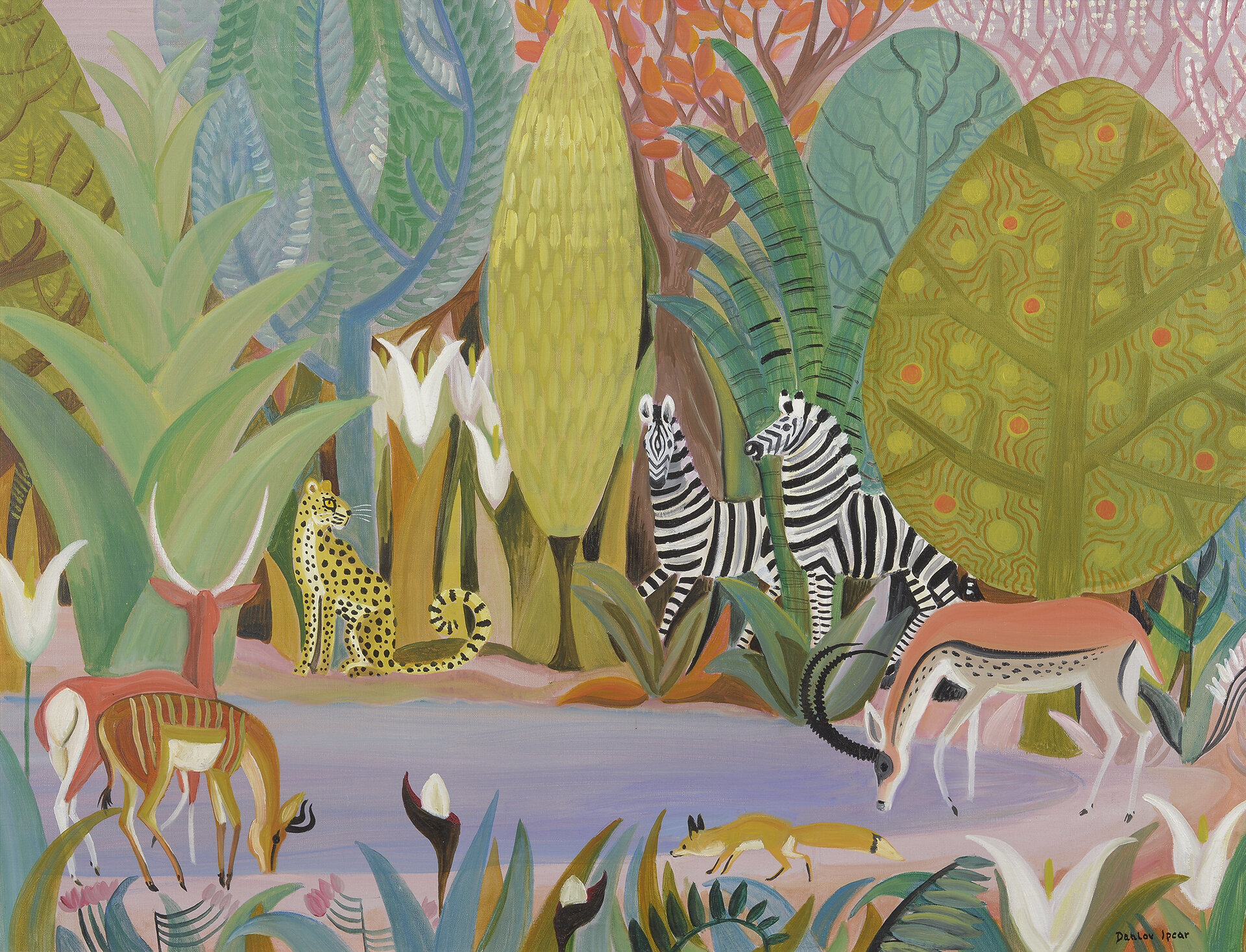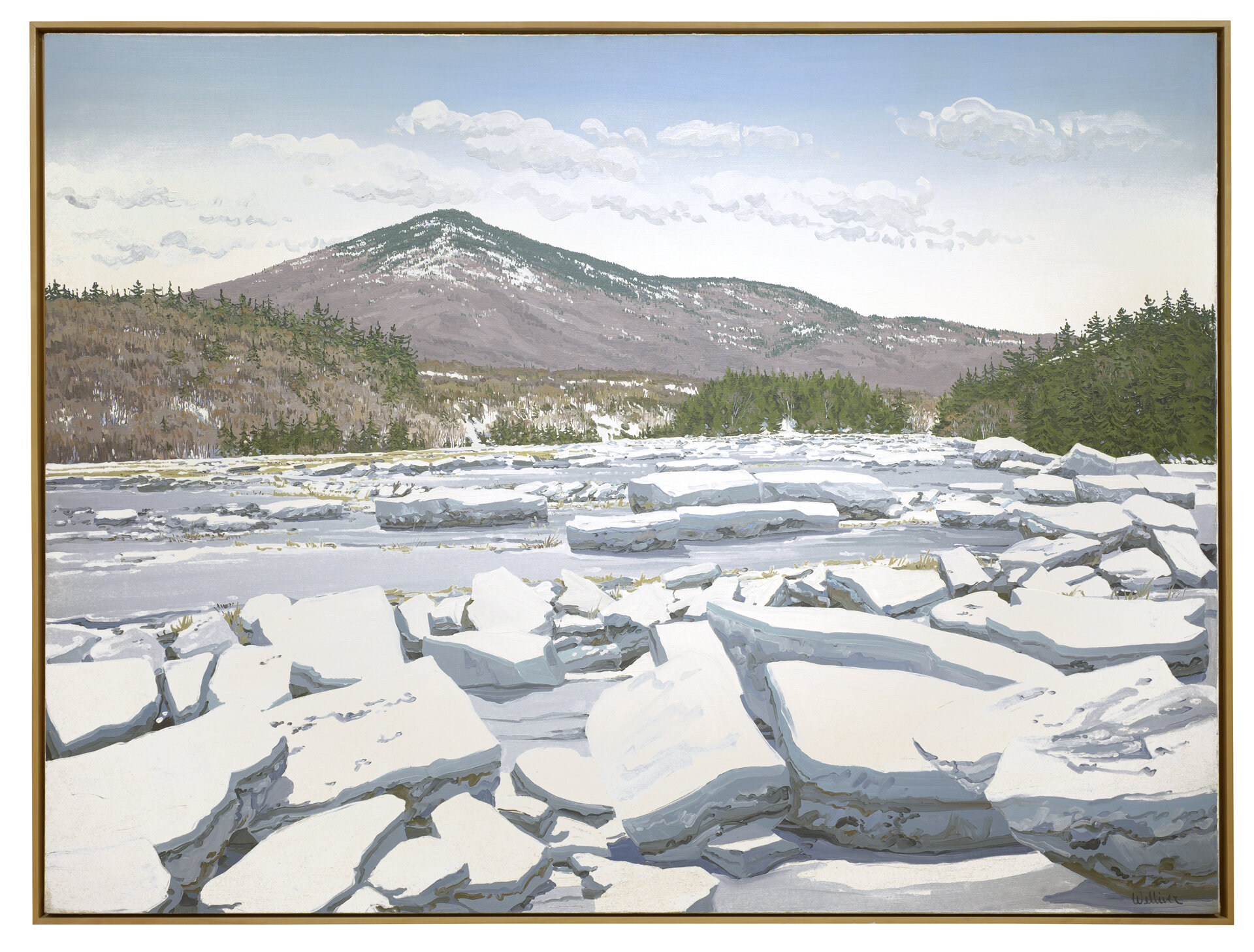GRADES K-12
Symbiosis Unit
Sustainability Unit
Insects + Arachnids Unit
Botany Unit
Bird Unit
Visual Storytelling Unit
Woods + Water Unit
Community Quilts Unit
Marine Life Unit: Fish
Weather Unit
Louise Nevelson Unit: Sculptures
Louise Nevelson Unit: Sculptures
Using found objects, create a Louise Nevelson-inspired sculpture! Collect recycled materials, objects found in nature, pieces of wood, and other other un-used objects to build your work of art. As you build your sculpture, notice how light and dark (shadows!) influence your piece. Unify your sculpture by painting it your favorite color.
This unit is inspired by the work of students, educators, museum educators, and teaching artists in the Stories of the Land and Its People program.
Louise Nevelson
Louise Nevelson, The Endless Column, 1969-85, 1980.35.30
Detail: Student sculpture inspired by Nevelson’s work.
Vocabulary:
Shape
Light / Shadow
Composition
Texture
Color
Curricular Connections:
Community
Typography
Poetry (“I am Poems”)
Geography
Environment / Conservation
Farnsworth Collection:
Notice works of art by artist Louise Nevelson for inspiration!
Activity:
Appleton Village School Community Sculpture
Stories Exhibition 2018
Notice: Notice land formations in your community landscape. What shapes do you see? Create a list and document your findings with photographs and sketches.
Create: Collect found objects such as discarded pieces of cardboard, wood scraps, or other items you no longer have use for. Create a layout with these items, paying close attention to shape, composition, and texture. How can you create a reflection of your community’s landscape using these materials? Arrange and rearrange your objects to create a 3-dimensional landscape. Step back and reflect on your layout as you work. How does shape and texture inform your composition?
Stories 7th grade students assemble their objects into wooden boxes so that they may stack their individual creations into a collaborative arrangement.
Option #1: Inspired by Louise Nevelson’s sculptures, select one color to paint your landscape. Nevelson often used white, black, or gold. Select a color that has meaning to you and your community. Reflect on how this color may alter your sculpture. What impact does it have on the shapes? What can be seen better, and what is now blended or unified?
Option #2: On the backside of your sculpture, create an individual portrait box. Use colors that represent you. You could include meaningful words, poetry, and your own silhouette in your design.
Option #1
Option #2
Gallery of Student Work:
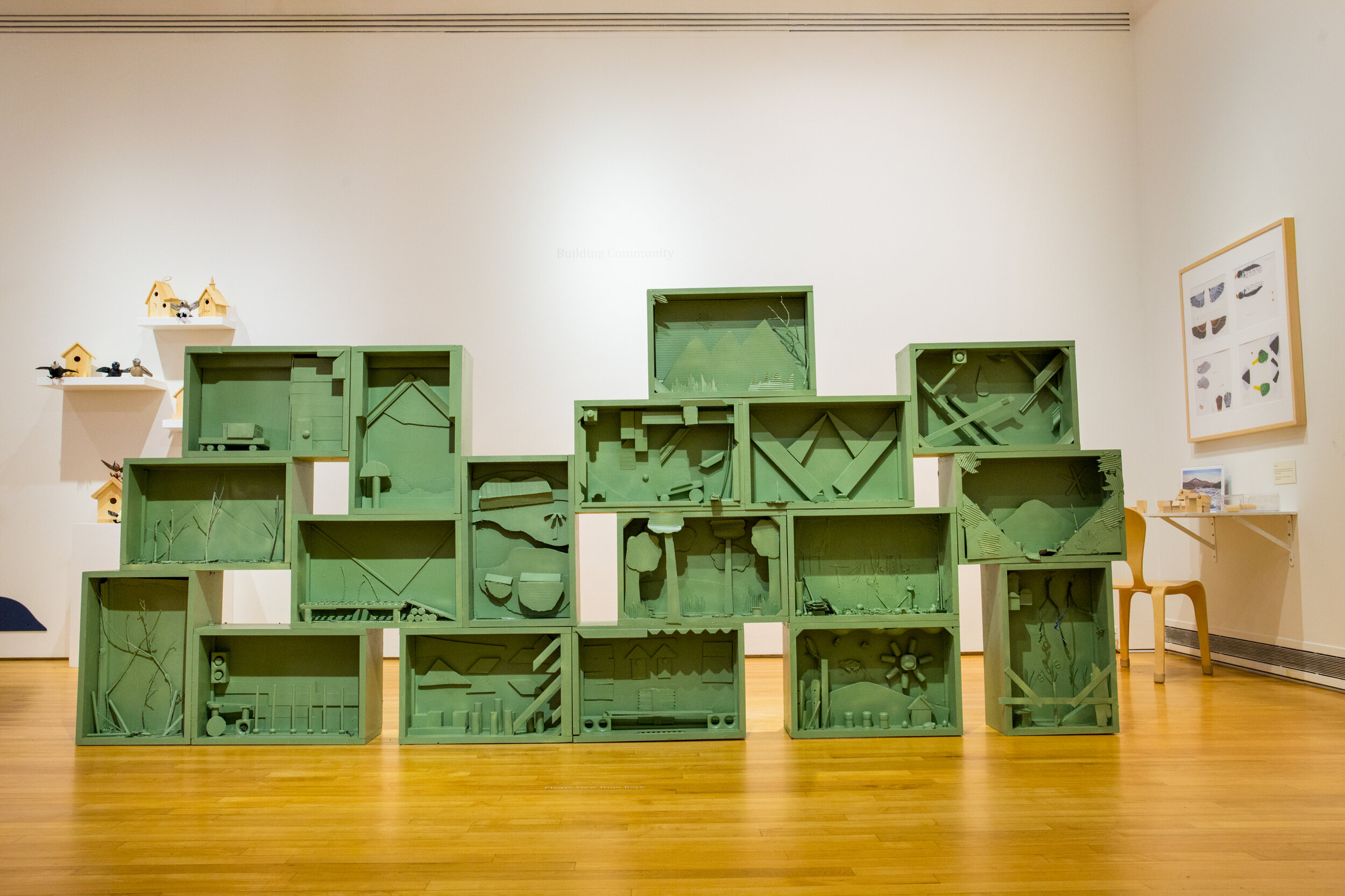

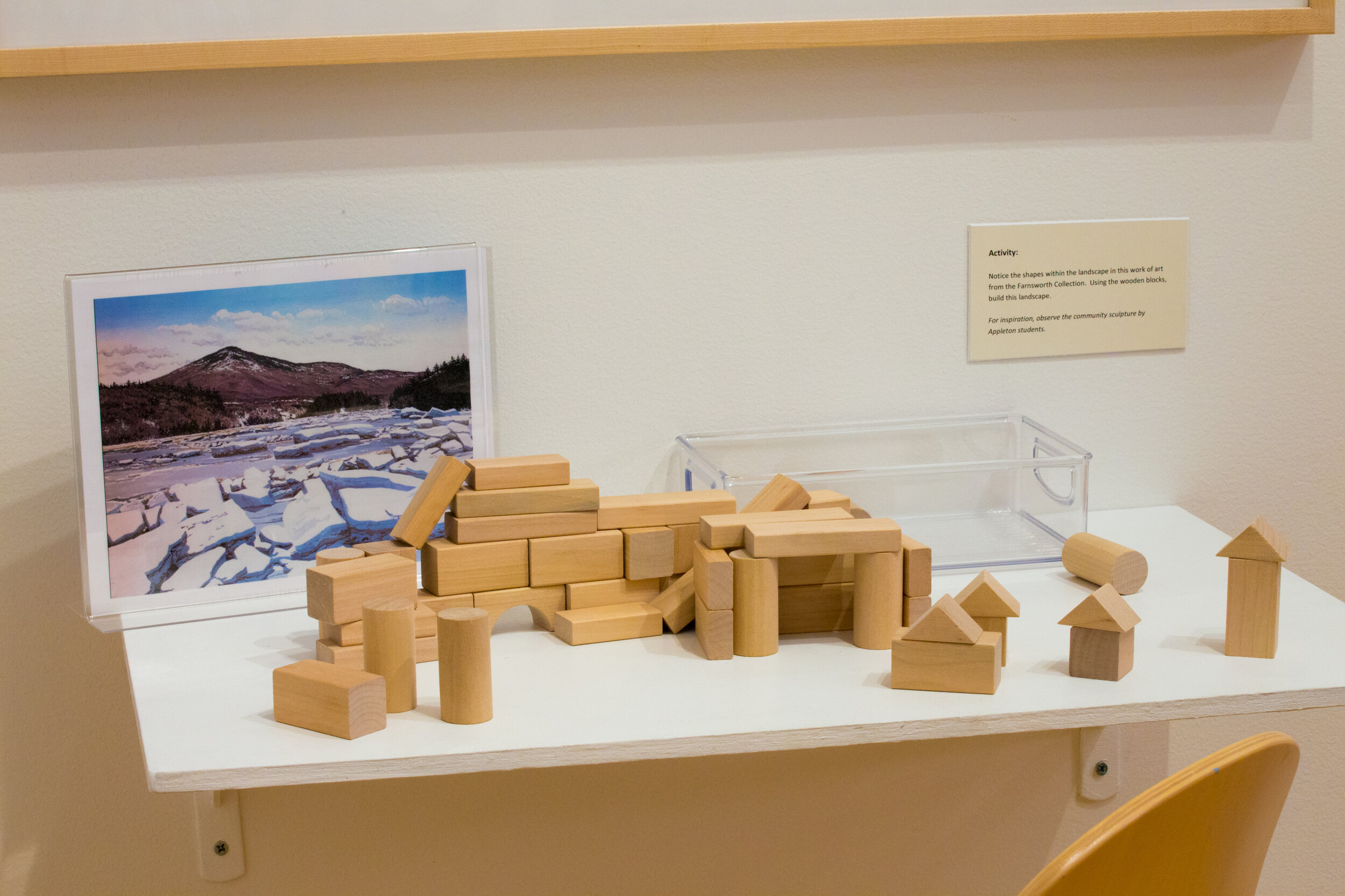
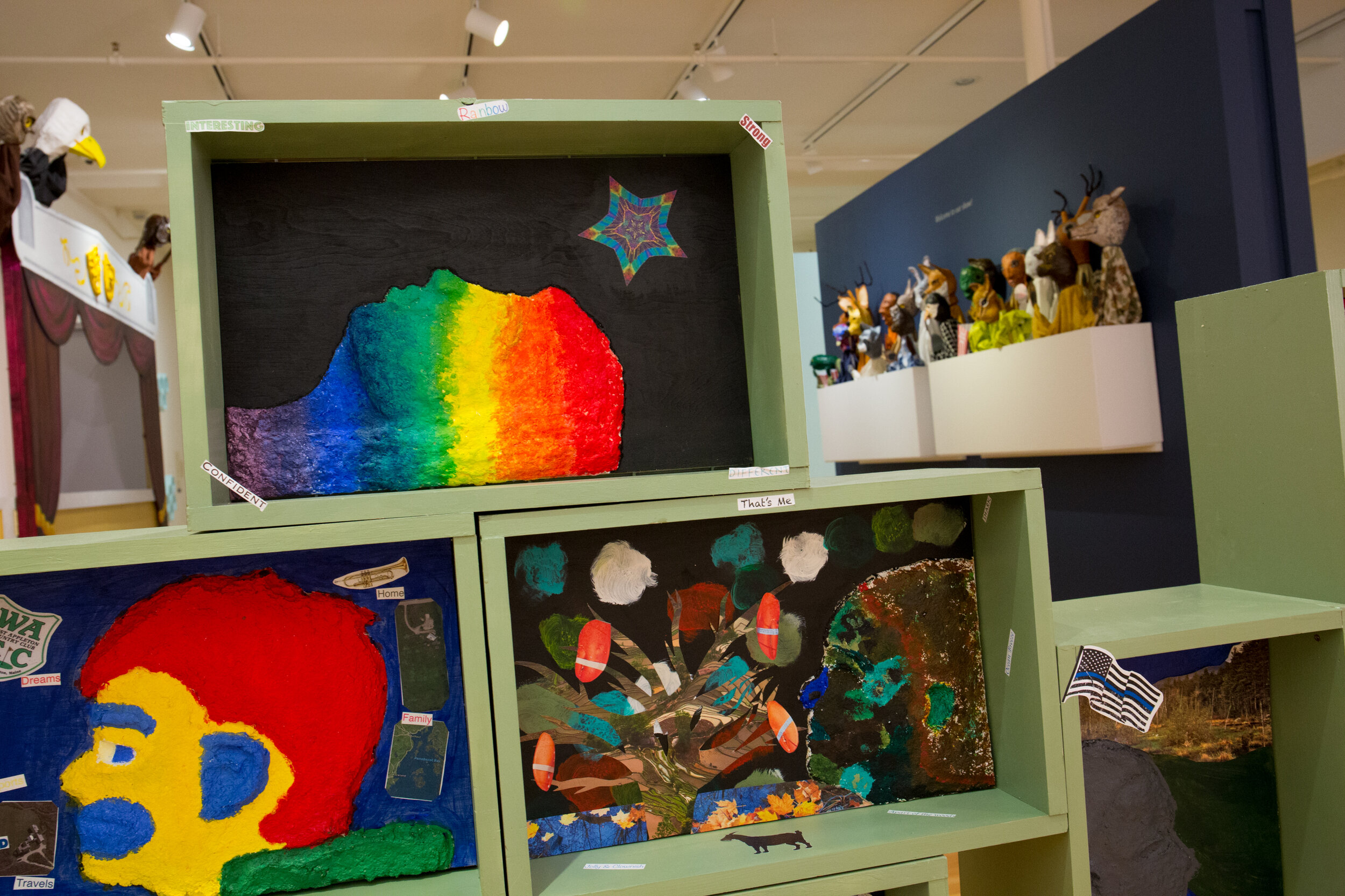
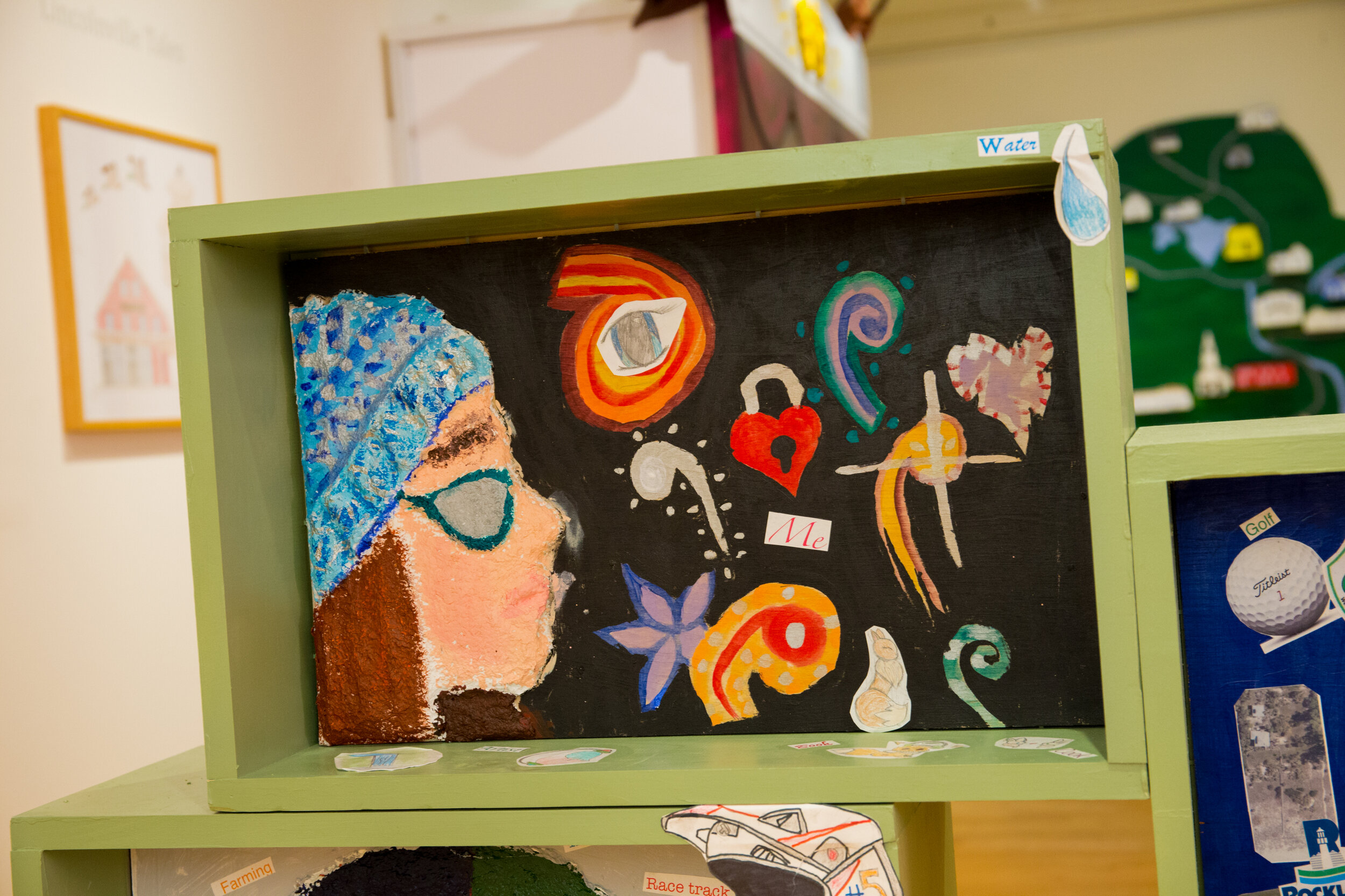



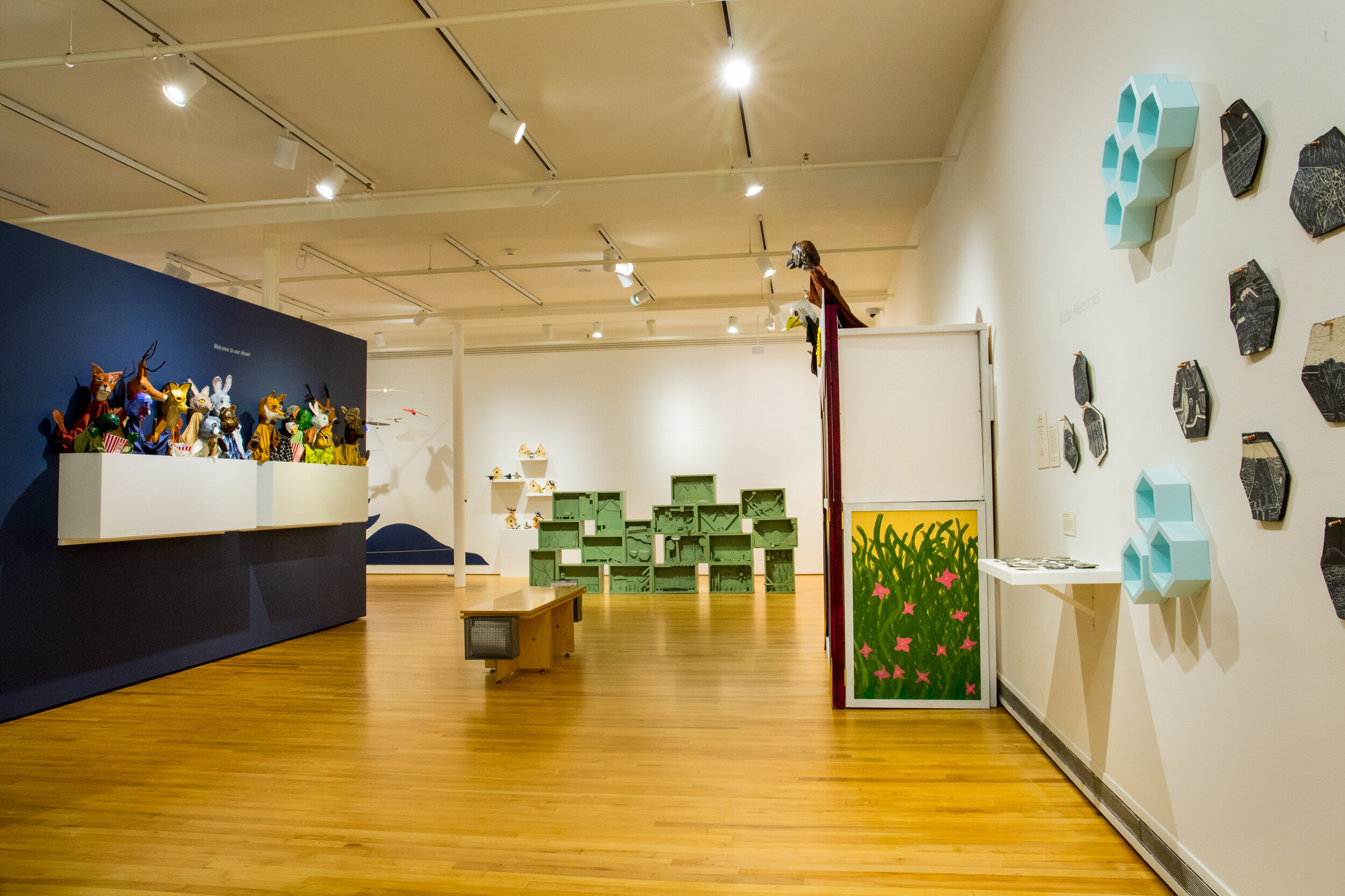
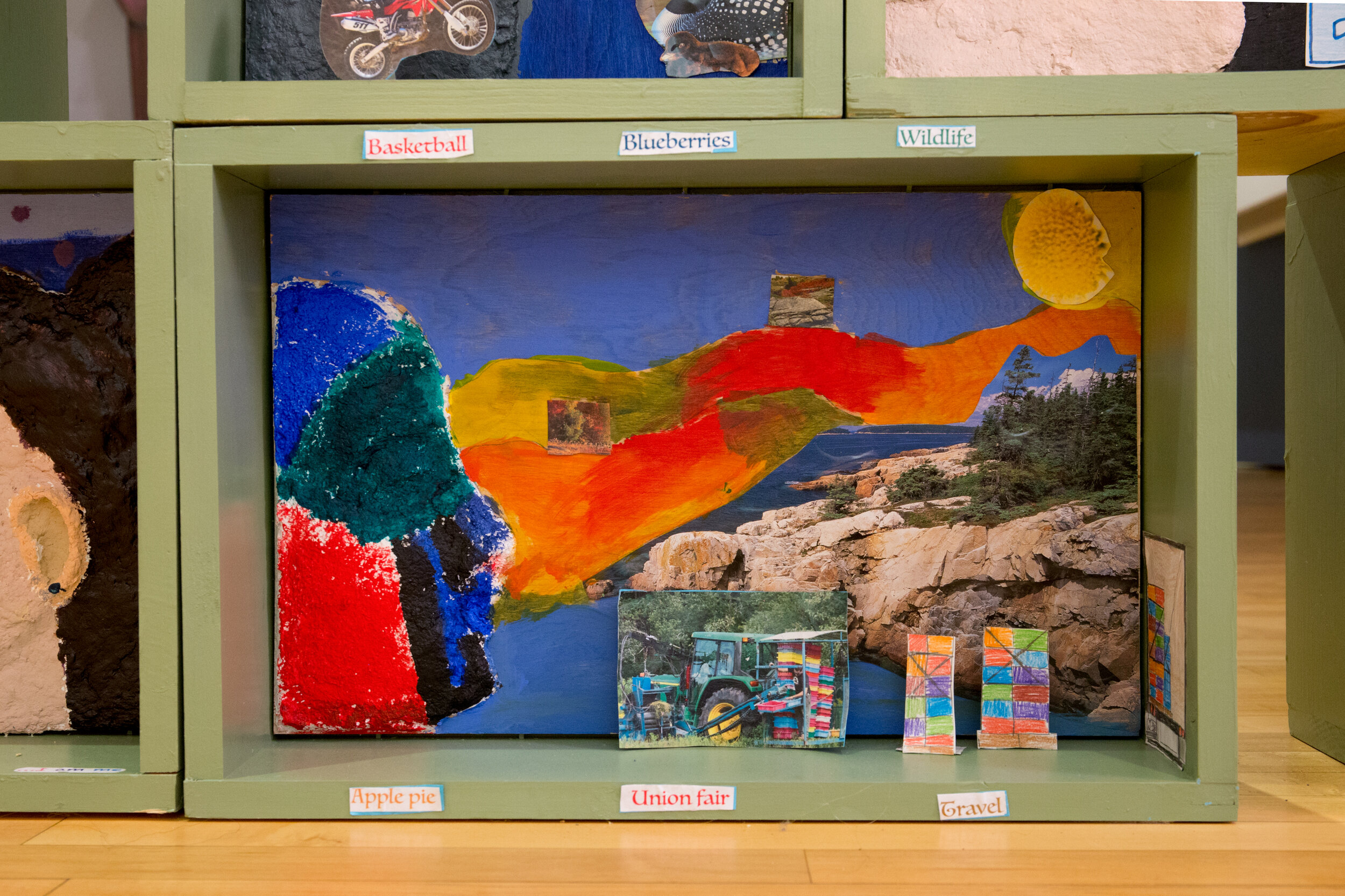


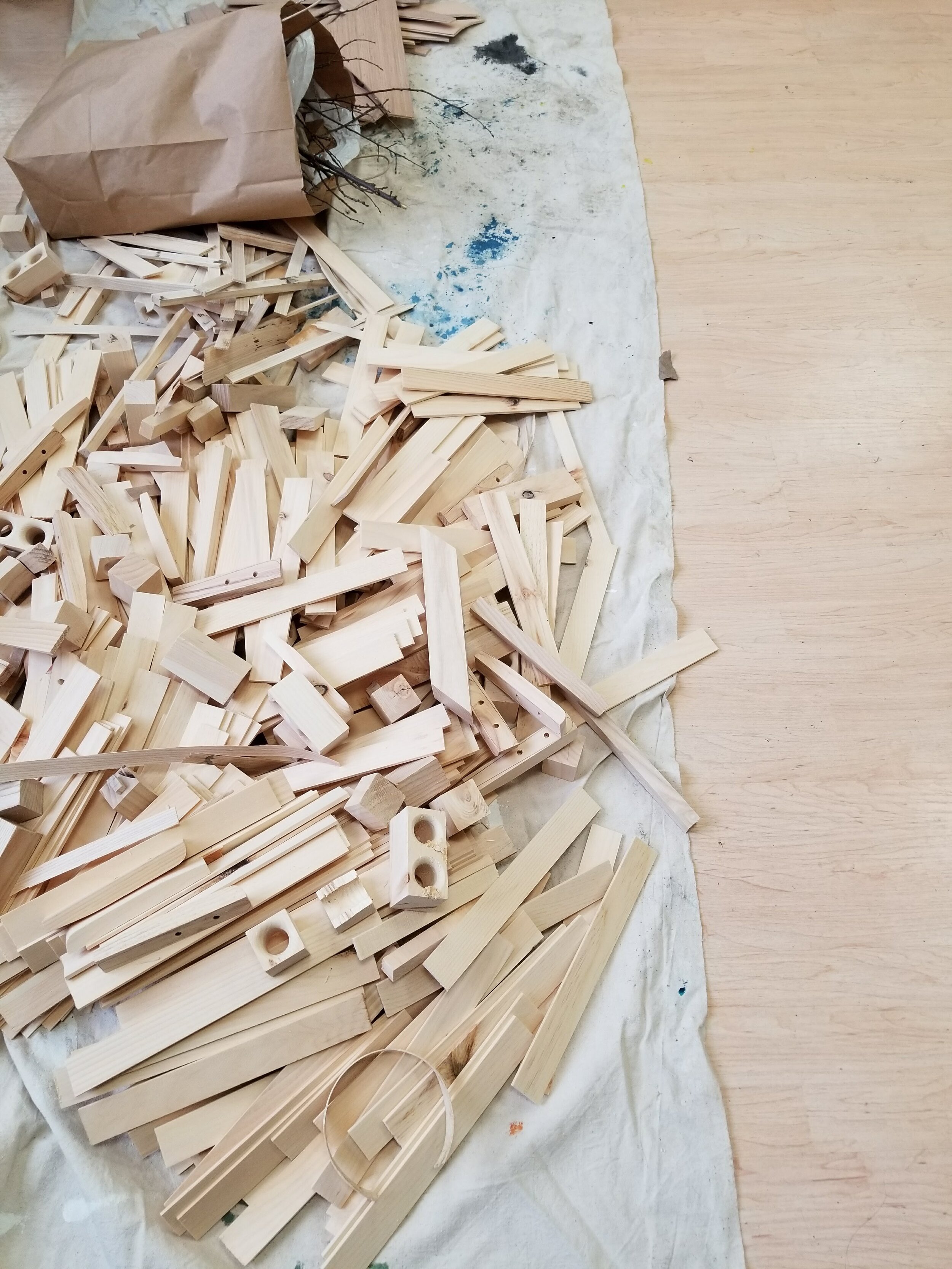
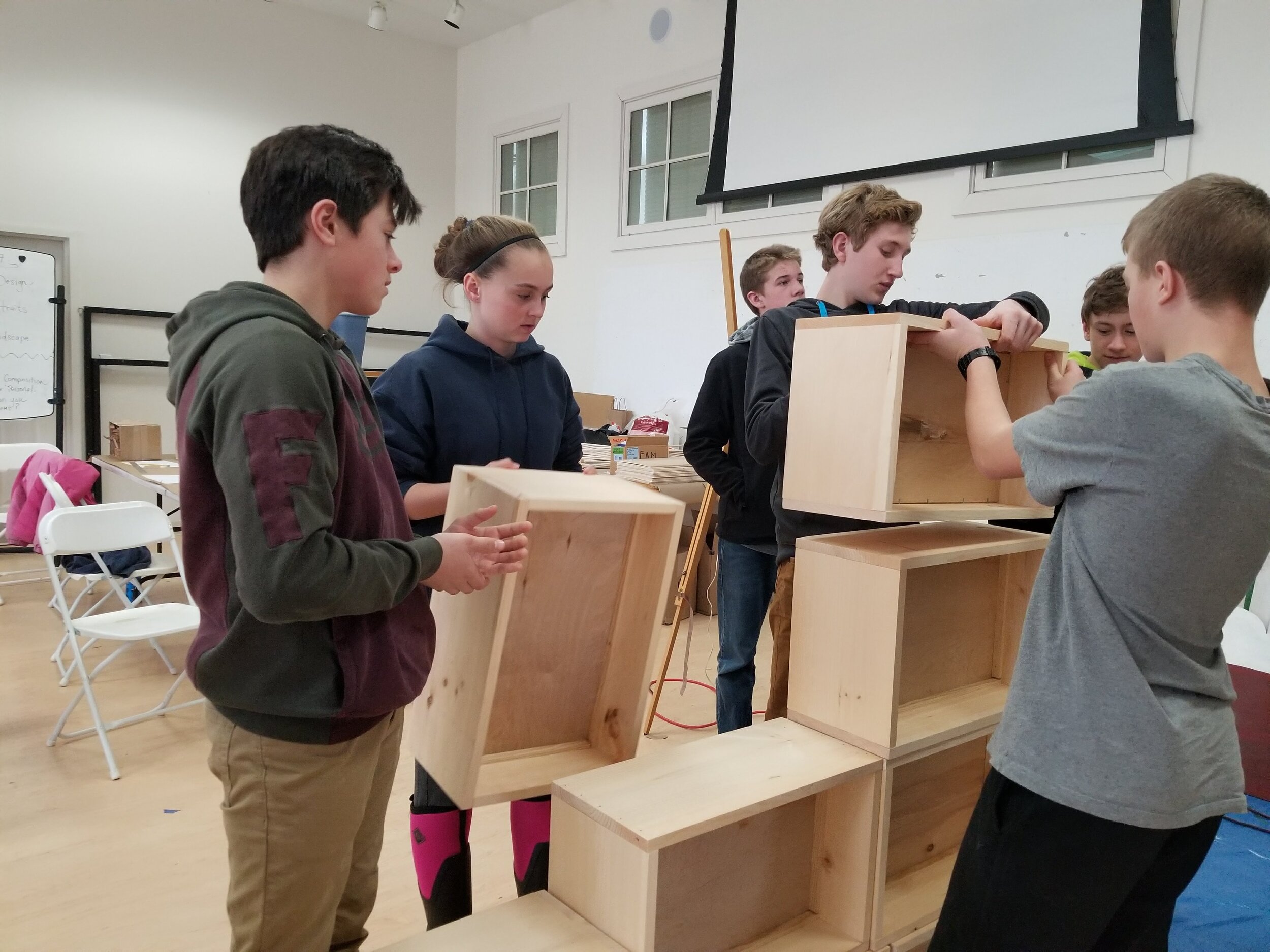
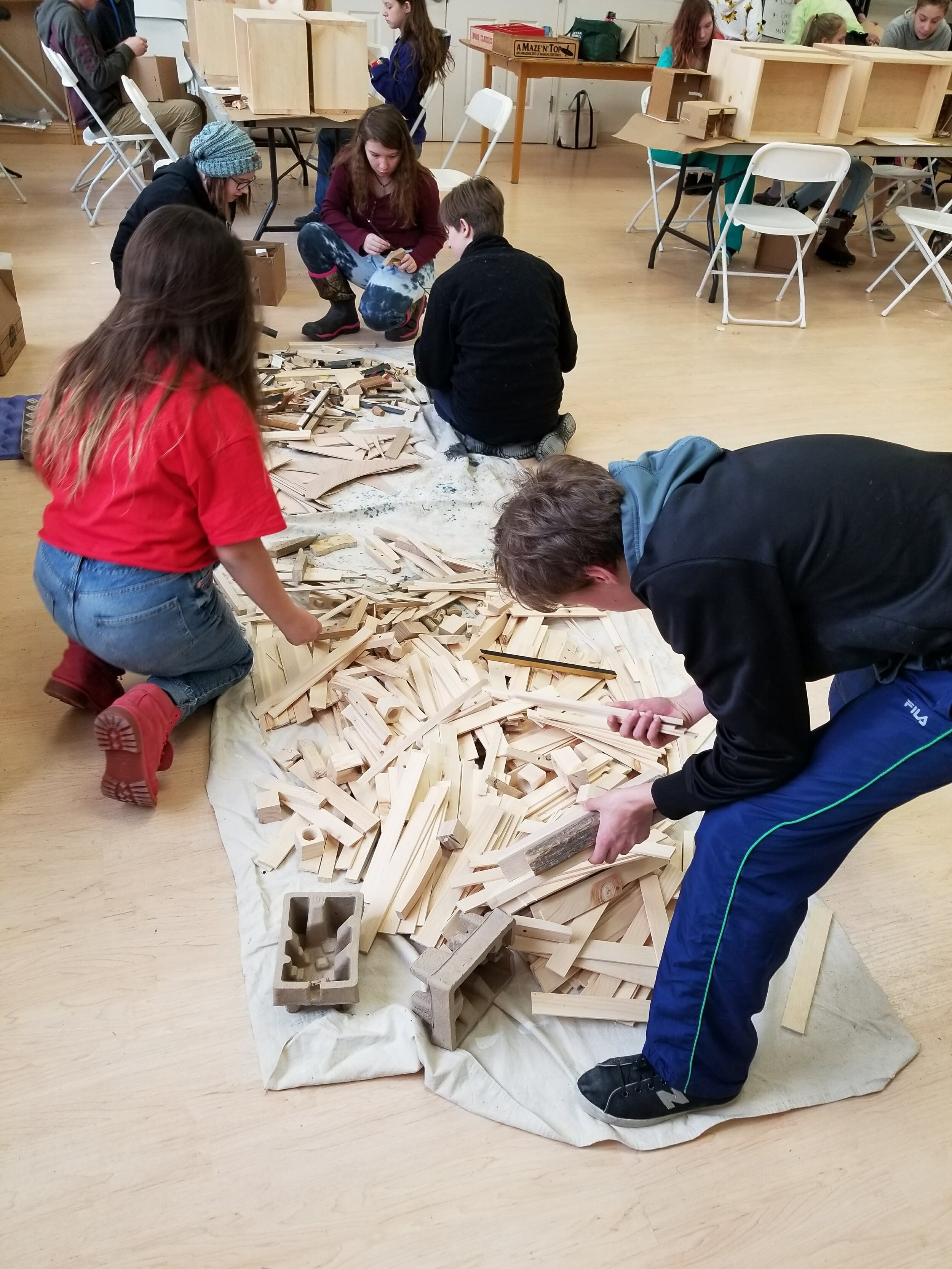
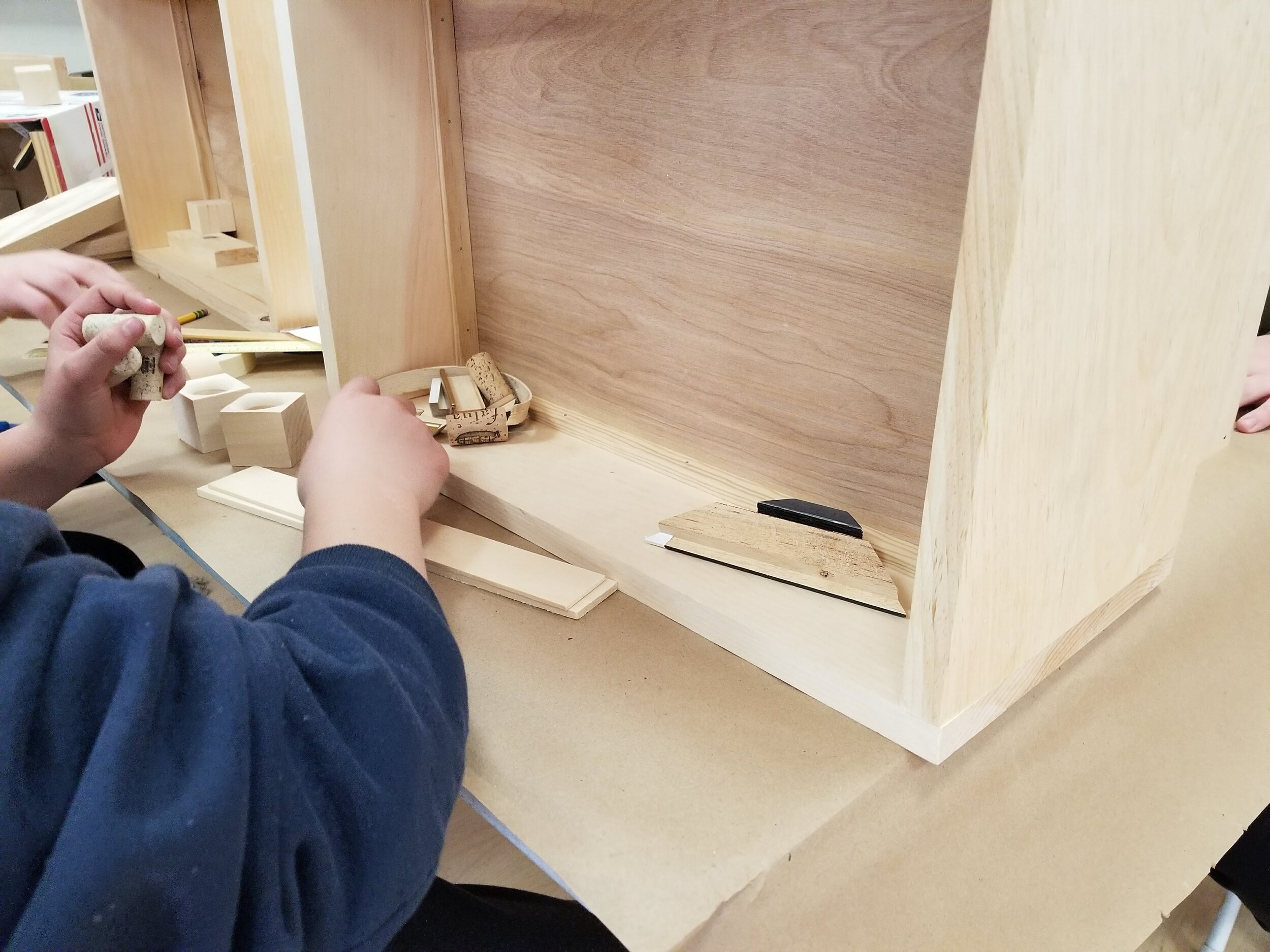
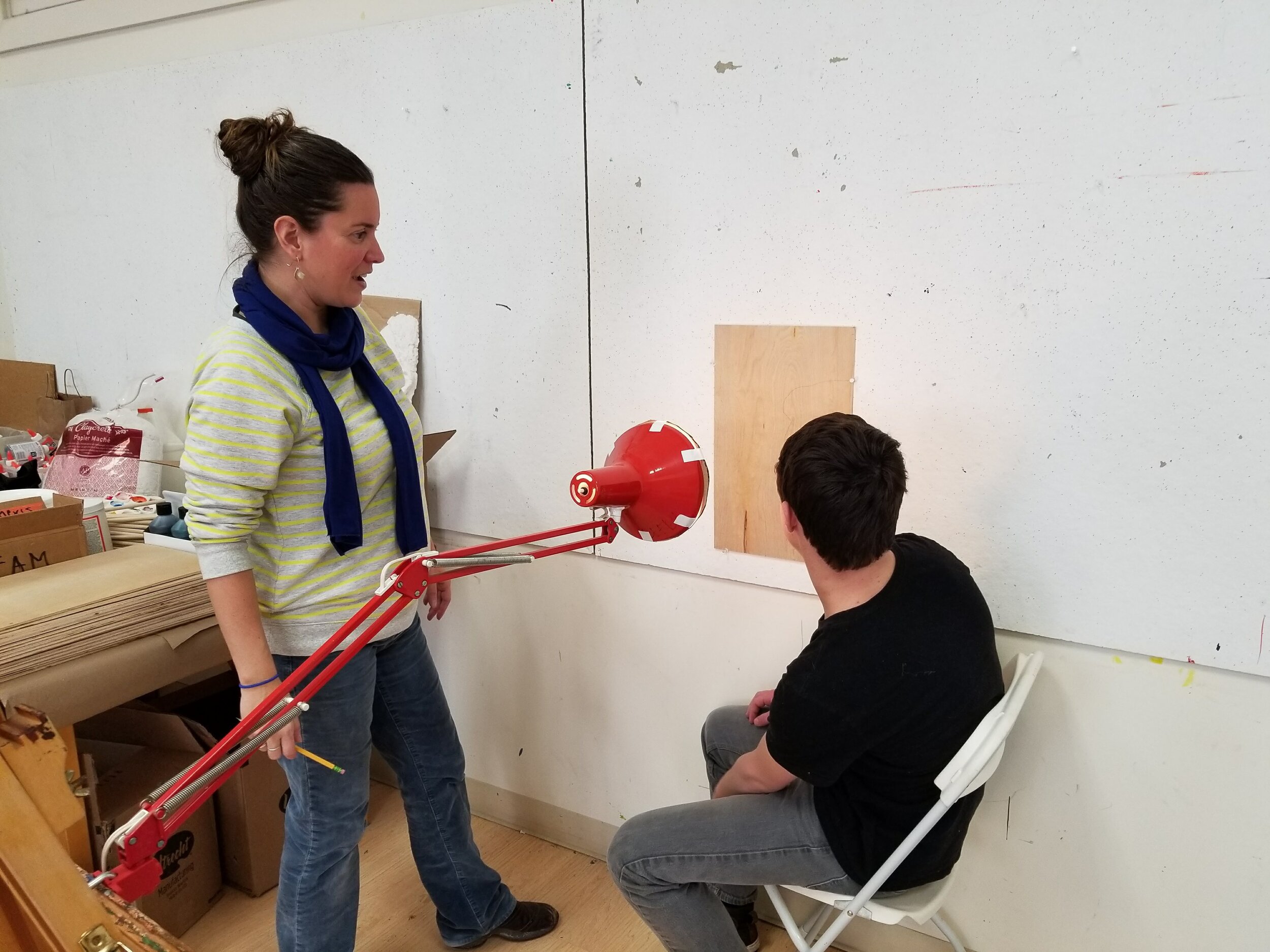
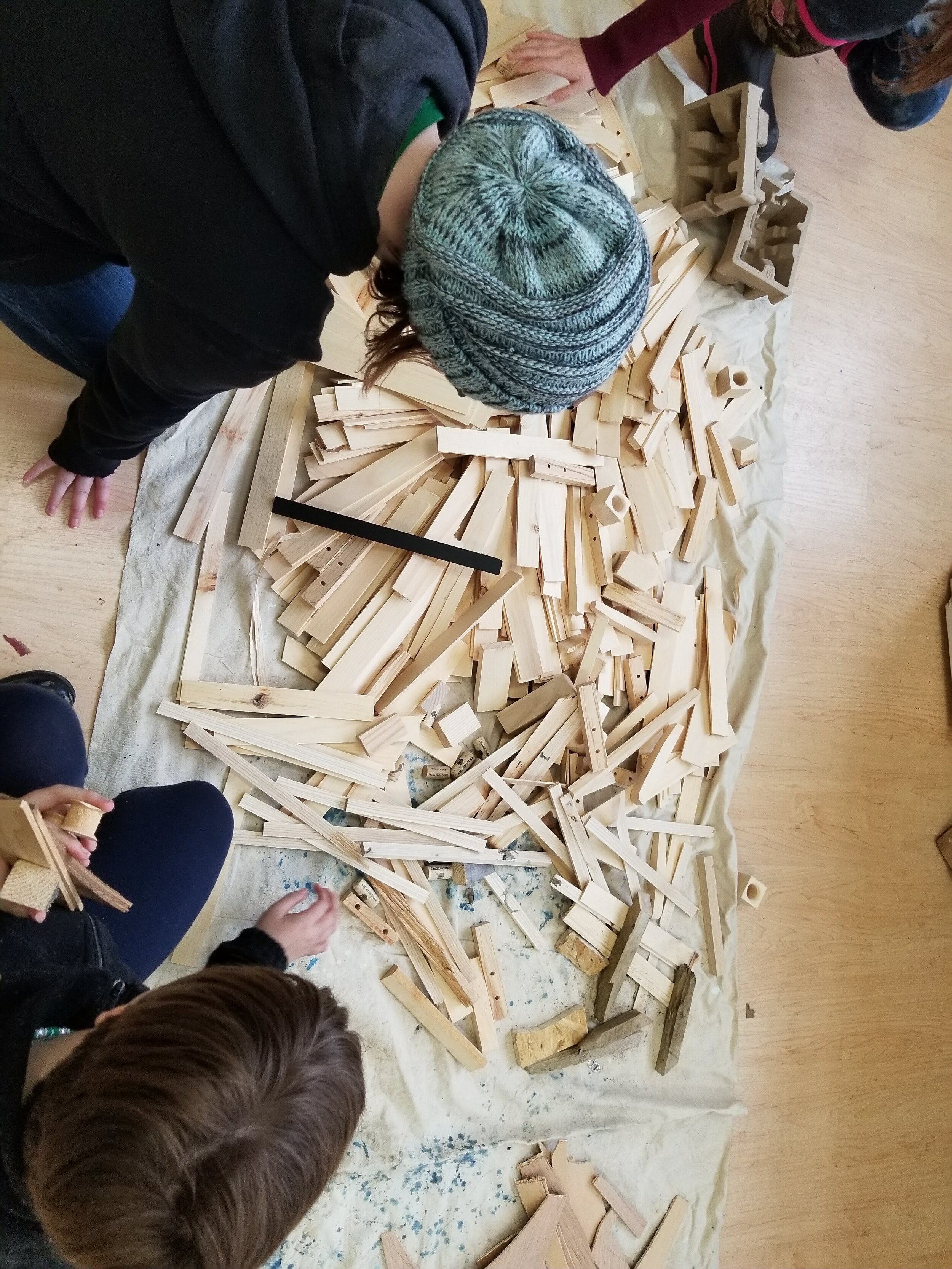
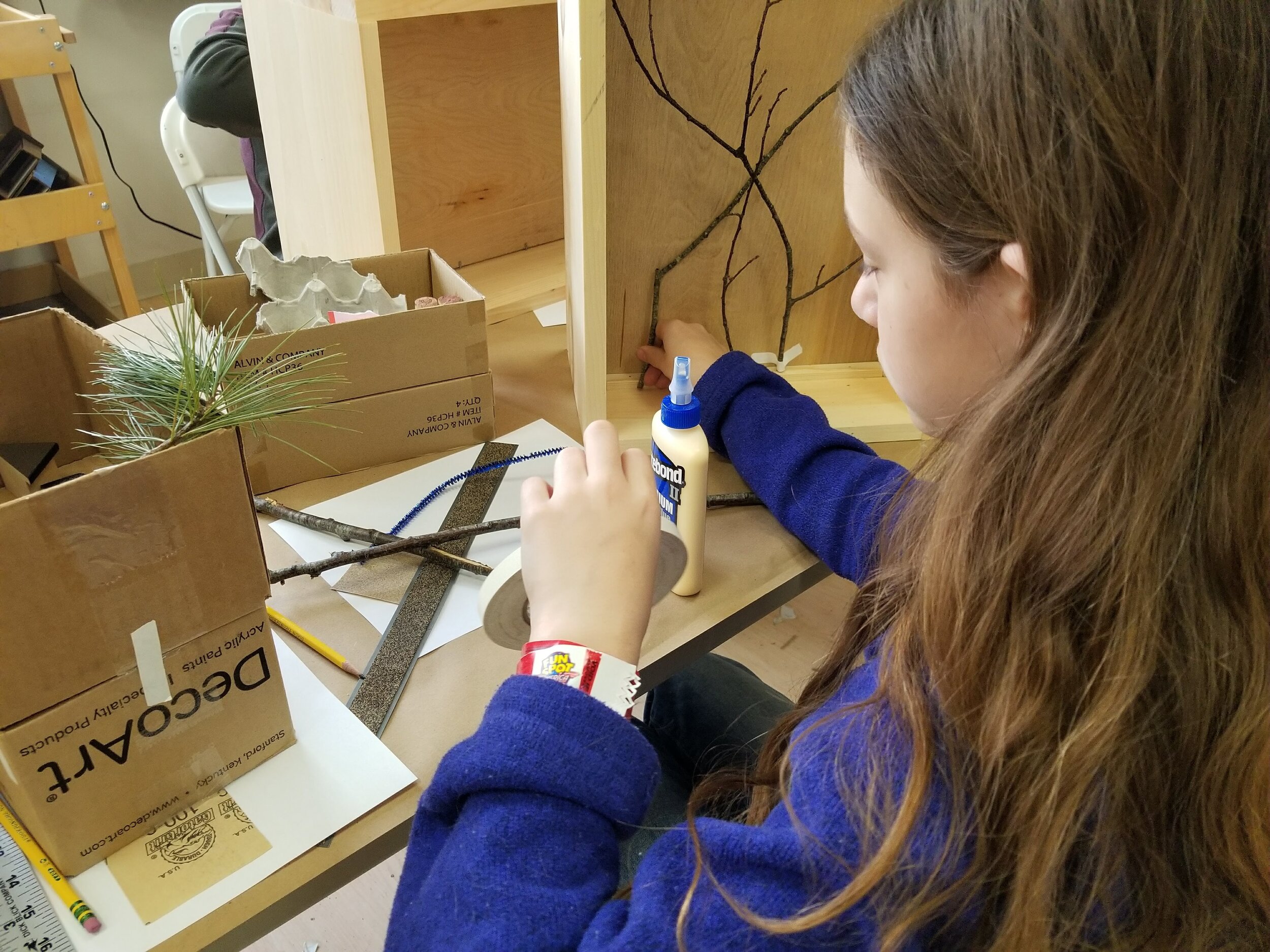

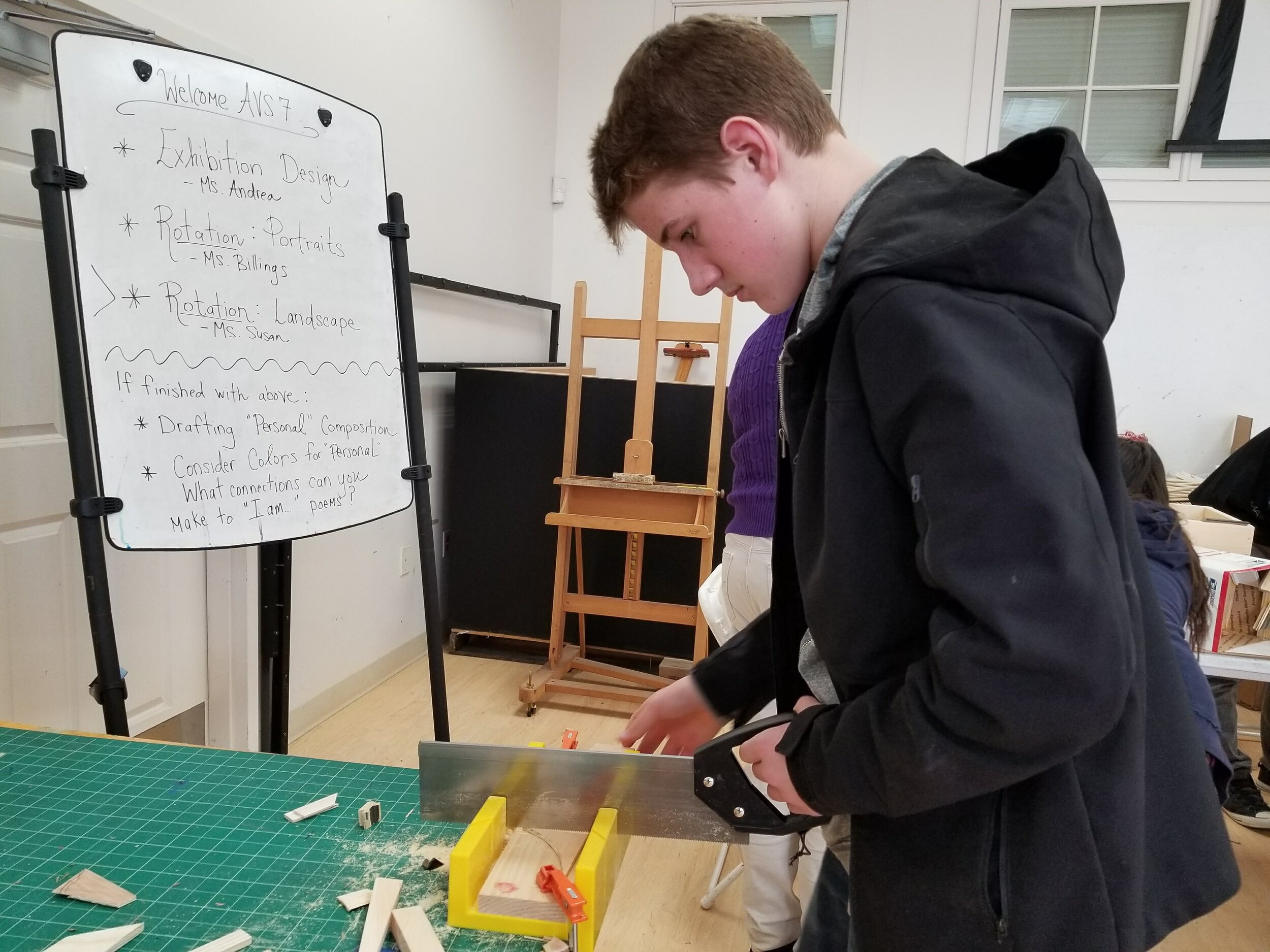
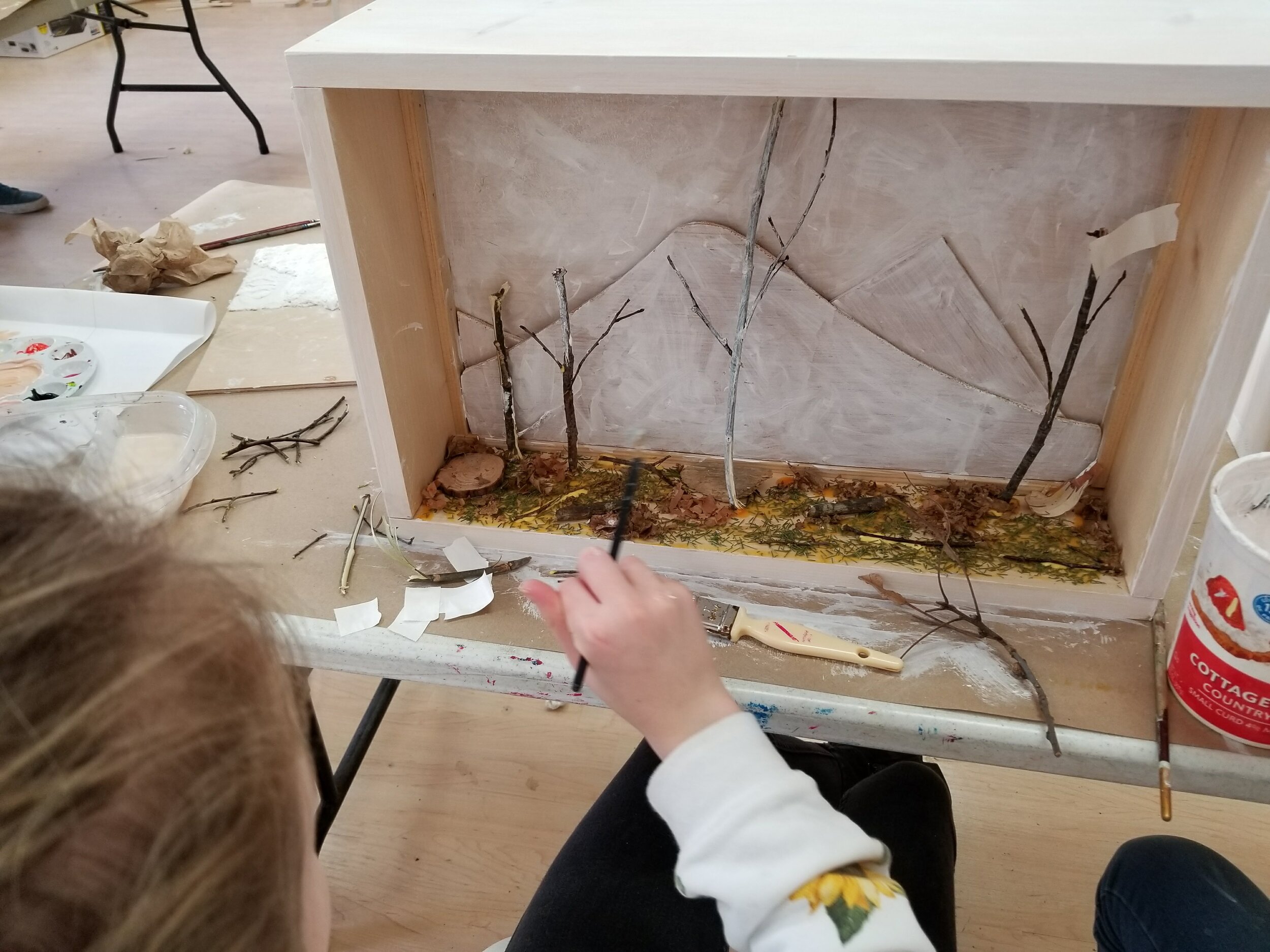


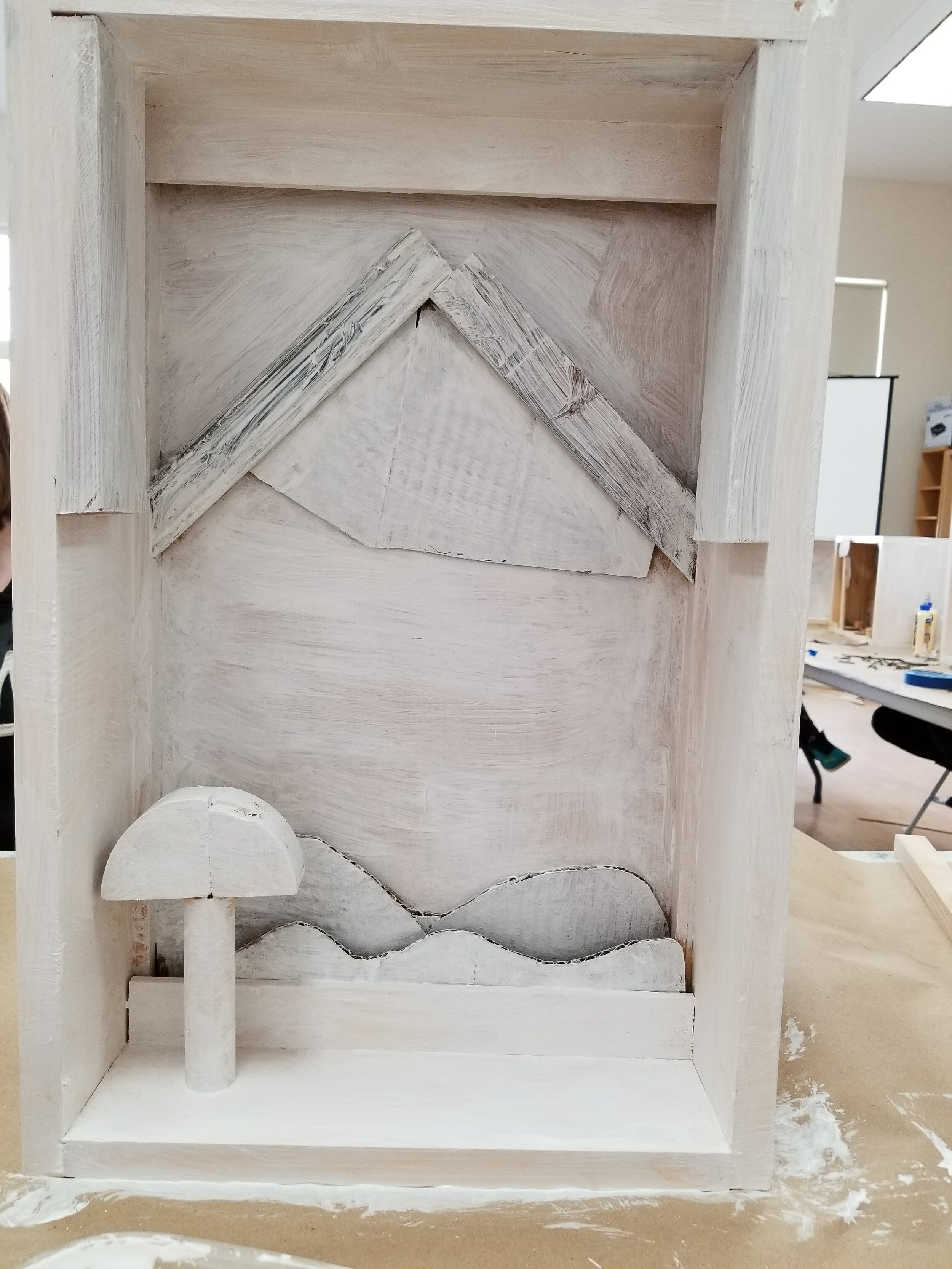
Share a photo of your sculpture by emailing edassistant@farnsworthmuseum.org.
Activity:
Notice: Notice key shapes and colors in works of art in the Farnsworth collection.
Create: Rip or cut sheets of colored paper into shapes to re-create the composition.
Reflect: How can you create depth and dimension using only shapes and color?
Option: Find three dimensional “found objects” to include in your work of art.
Younger students may wish to use blocks to create a temporary composition!
Farnsworth Collection:
Notice works of art in the Farnsworth collection for inspiration.
Podcast:
Enjoy this audio clip of Maria Nevelson, granddaughter of Louise Nevelson, who speaks about the early days in Rockland for her grandmother and her family after their arrival from what is present-day Kiev, Ukraine. What does Louise Nevelson’s story help you to consider about community and belonging?
Maria describes artworks that her grandmother “built”, similarly to how one would build a house. Click here to view one of the artworks referenced, “Mrs. N’s Palace”. Can you imagine what a sculptural environment, or “palace”, of your own might look like? What colors, textures, and features would it include?
Stories of the Land and Its People
The Stories of the Land and Its People program encourages student participants to learn about people and places in their community. For more student project examples, visit our Student Exhibitions page.
Developed by:
Andrea Curtis, Museum Educator
Farnsworth Art Museum
Holly Billings, Classroom Educator
Farnsworth Stories Program
Susan Beebe, Teaching Artist
Farnsworth Art Museum
Not Pictured: Laura Freeman, Art Teacher, Farnsworth Stories Program
Contributor(s):
Claire Horne, Education Project Assistant
Farnsworth Art Museum
Developed by Andrea L. Curtis, Farnsworth Art Museum, Arts in Education Program, 2021

































